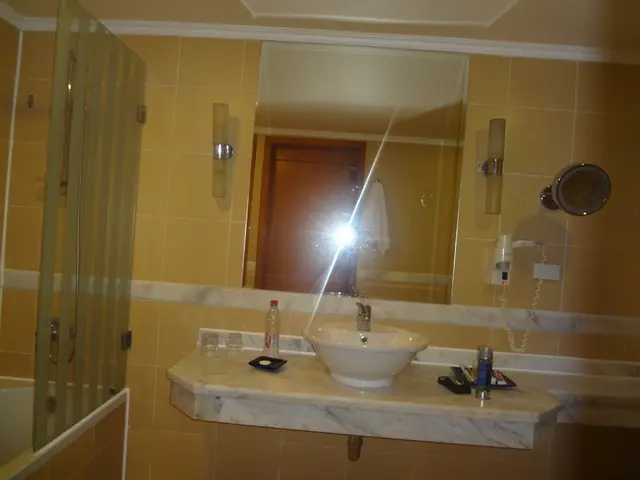Homemade Solar Energy Setup for Your Residence
Going Off-Grid: A Guide to Solar Power System Installation
Are you considering an off-grid lifestyle or simply looking to reduce your carbon footprint? Solar power systems offer an excellent solution for both. Here's a comprehensive guide to help you navigate the process.
Assessing Your Energy Needs
The first step is to calculate your daily energy needs. You can do this by examining your utility bills or by estimating the wattage and usage hours of your appliances. This information will help you size your solar panels and batteries correctly.
Choosing the Right Site and Panels
Ideally, your solar panels should be placed in an unobstructed, south-facing location. Roofs with shading or insufficient space might require ground mounts. Look for panels with an efficiency of over 20% and strong warranties, such as monocrystalline panels with a 23% efficiency rate.
Selecting the Battery Bank
A battery bank is essential for energy storage in off-grid systems. You have two main options: lead-acid (cheaper, shorter lifespan) or lithium-ion (longer life, higher cost).
Investing in an Inverter
An inverter is necessary to convert the DC power from your batteries and panels into AC power for your appliances. Ensure that your inverter is sized for the startup surge watts of your appliances, such as a refrigerator. Selecting a slightly oversized inverter can help facilitate future expansion.
Installing Your Solar Power System
The installation process involves mounting supports, installing panels, wiring, inverter connection, sealing weatherproof, and testing. It's important to follow electrical and height safety practices, and in some cases, you may need a permit.
Optimizing Solar Harvesting Efficiency
Professionals recommend considering shade, space, and south-facing aspects to optimize solar harvesting efficiency.
Expanding Your System
As your energy needs grow, you can add more panels to increase your wattage, expand your battery bank to boost storage, and increase your inverter capacity to support the total load plus future growth.
Resources for DIY Installation
For more detailed, step-by-step DIY guidance including recommended tools and safety equipment, EcoFlow’s beginner installation guide and Jackery’s off-grid system guide are excellent resources. Instructional videos are also available for practical understanding of wiring, inverter pairing, and system testing.
Happy solar power system installation!
Product Highlights
- The All-American Pressure Canner/Cooker is available in both 15.5 quart and 30 quart sizes.
- An Automatic Solar Watering System is also available.
- The Jora JK270 Composter has a capacity of 9.5 cubic feet.
- The Excalibur 9-Tray Food Dehydrator includes a timer.
- The Premium Drinking Water Safe Garden Hose has a diameter of 7/16".
- The Green Cone Solar Waste Digester is another product mentioned.
- Natural Cedar Raised Garden Beds are also available.
- The Excalibur 5-Tray Food Dehydrator has a digital timer.
- A Farmstead Raised Garden Bed is also featured.
- A Greenhouse Solar Powered Ventilation System is available.
In the journey towards a sustainable living, home-and-garden appliances such as the All-American Pressure Canner/Cooker, the Jora JK270 Composter, and the Excalibur Food Dehydrators can play significant roles. These lifestyle choices, when paired with an off-grid solar power system, can help reduce carbon footprint and promote a more sustainable living.
As you delve deeper into sustainable living, you may consider expanding your solar power system by adding more panels, extending the battery bank, or increasing the inverter capacity to accommodate future growth, much like the versatility offered by certain home-and-garden products such as the Farmstead Raised Garden Bed or the Greenhouse Solar Powered Ventilation System.








